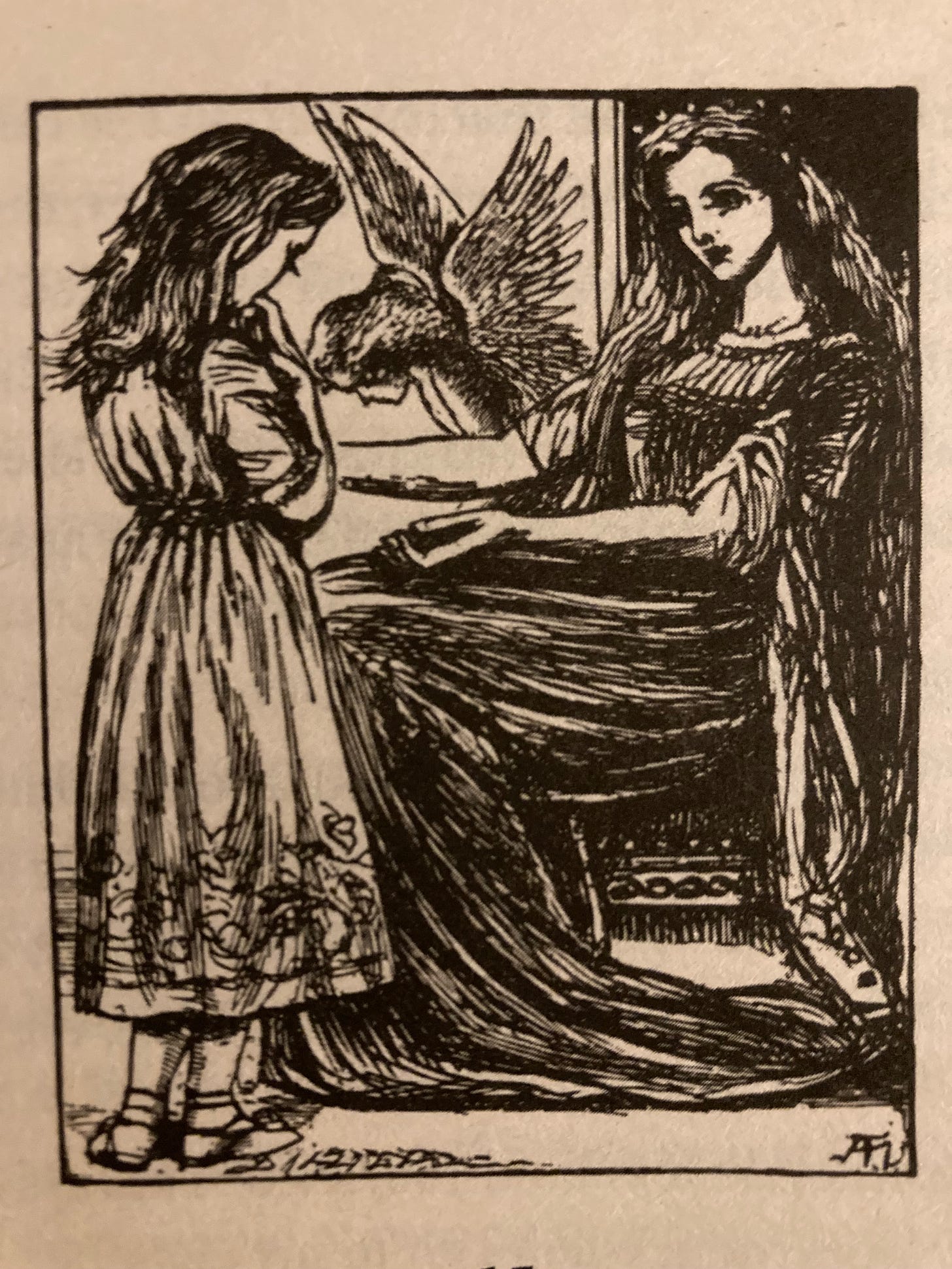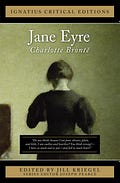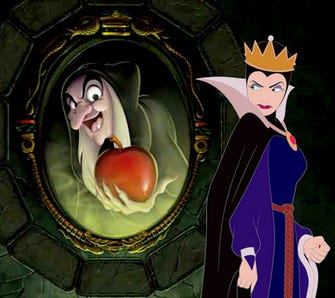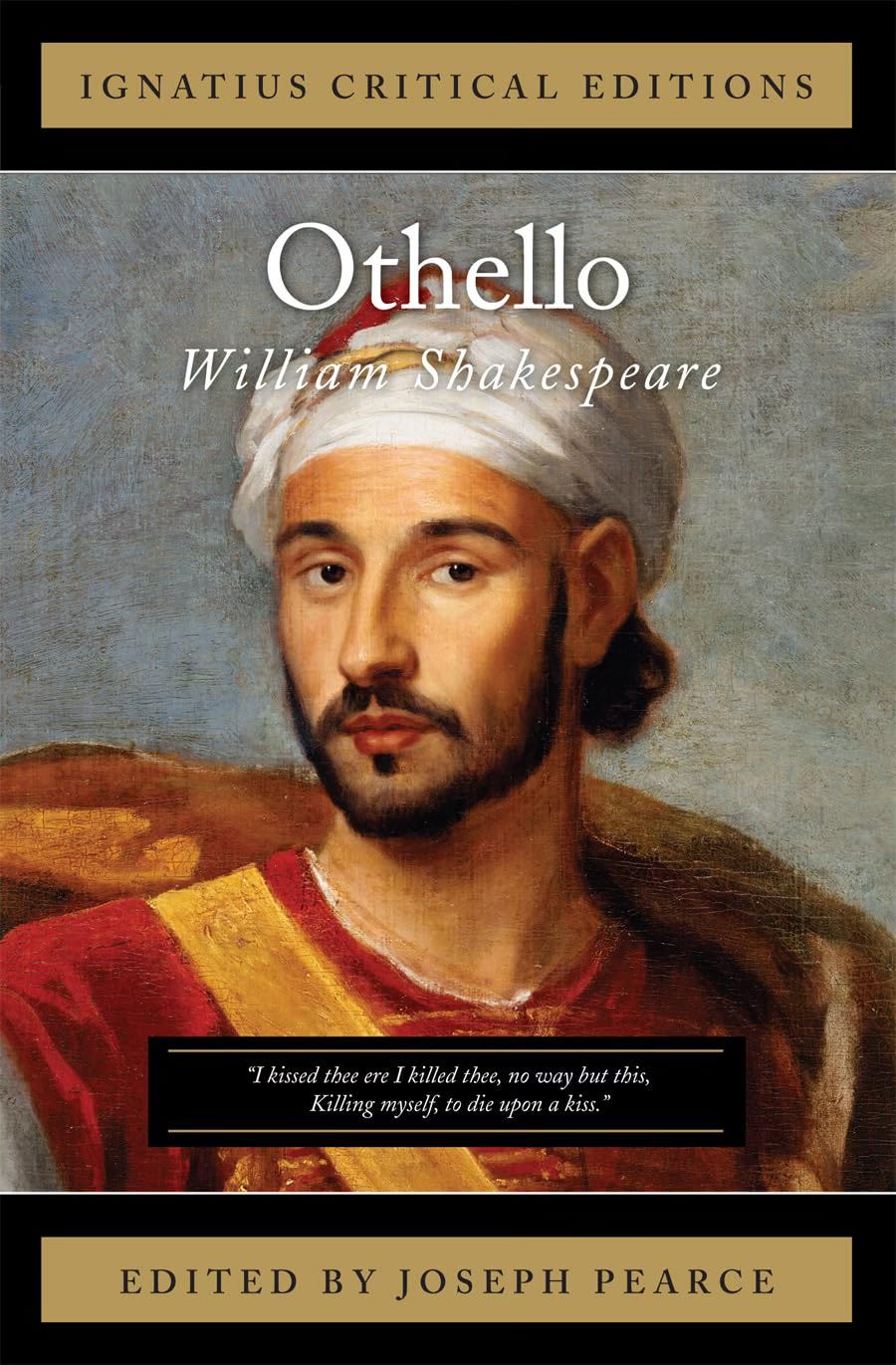Welcome to Reading Revisited, a place for friends to enjoy some good old-fashioned book chat while revisiting the truth, beauty, and goodness we’ve found in our favorite books.
The body, John Paul II wrote, “expresses the person.” It “reveals the living soul.” That is to say, our bodies make visible the invisible truths of our inner lives. They allow us to communicate all that we think, feel, and experience. Our bodies make us known in the world.
, The Catholic Table, 52
Who we are is body and soul.
We’re not souls trapped in bodies. Nor are we soulless bodies. What we do to our bodies, affects our souls. What we do to our souls, affects our bodies. This, in my words, is the theology of the body.1
And this Jane Eyre knows in her very bones.
St. John’s proposal - divorce of soul & body
“I want a wife: the sole helpmeet I can influence efficiently in life, and retain absolutely till death.”
I shuddered as he spoke: I felt his influence in my marrow—his hold on my limbs.
“Seek elsewhere than in me, St. John: seek one fitted to you.”
“One fitted to my purpose, you mean—fitted to my vocation. Again I tell you it is not the insignificant private individual—the mere man, with the man’s selfish senses—I wish to mate: it is the missionary.”
“And I will give the missionary my energies—it is all he wants—but not myself: that would be only adding the husk and shell to the kernel. For them he has no use: I retain them” (Charlotte Bronte, Jane Eyre, 508).
Jane, though poor, obscure, plain, and little, nevertheless (and this is perhaps what causes readers to love her) retains a powerful respect for her worth, which fully includes her body.
And even as she uses denigrating (and rather gnostic) terms like “husk” and “shell” in reference to her corporality, underlying these words is a fervor which belies the insignificance which her terms seem to suggest. Jane retains the firm conviction that the gift of her body is not meaningless. A soundly catechized person of Lowood School2 she may be, and she cannot shake the terms through which she has learned to view the flesh and the sprit, but there’s this depth within Jane that knows she is all of herself, not just her spirit.3
I like to imagine Charlotte sitting down with JPII, hearing his theology of the body, and sighing with satisfaction, “Ah, here it is, this reconciles my mind and my heart. I was right to not toss my heroine’s body to one who deemed it valueless.”
Therefore, though Jane calls her body a mere “husk” and “shell,” I believe she would actually whole-heartedly agree with Chapman:
One of the most essential truths that the theology of the body helped me understand was that my body was not a husk, a shell, or a carrying case for my soul…Rather, it was the real me.(Chapman, The Catholic Table, 51-2).
Jane cannot give the “husk” of herself to someone who does not and will not love her, because she just knows that she knows that she knows that her body is her.
Oh! it would never do! As his curate, his comrade, all would be right…accommodate quietly to his masterhood; smile undisturbed at his ineradicable ambition; discriminate the Christian from the man: profoundly esteem the one, and freely forgive the other. I should suffer often, no doubt, attached to him only in this capacity: my body would be under rather a stringent yoke, but my heart and mind would be free (510).
And here she is merging terms, uniting, perhaps without trying or even really wanting to, these ideas of body and soul. If Jane’s body is given in missionary work but not given to St. John in the marital embrace, her heart and mind remain ungiven as well. Even if, she holds, she pours her physical energies out for him completely, if she does not physically unite with him, she will retain herself, her mind, her heart, her soul. But, if she gives him her body, she gives him herself.
But as his wife—at his side always, and always restrained, and always checked—forced to keep the fire of my nature continually low, to compel it to burn inwardly and never utter a cry, though the imprisoned flame consumed vital after vital—this would be unendurable.
“St. John!” I exclaimed, when I had got so far in my meditation.
“Well?” he answered icily.
“I repeat I freely consent to go with you as your fellow-missionary, but not as your wife; I cannot marry you and become part of you” (510).
Rochester’s (2nd) proposal - marriage of soul & body
Rochester, unlike St. John, deeply desires all of Jane - body and soul.4
When she comes to him, in his blindness, he hears her voice but must have her physical touch to confirm she is there.
“And where is the speaker? Is it only the voice? Oh! I cannot see, but I must feel, or my heart will stop and my brain burst. Whatever—whoever you are—be perceptible to the touch or I cannot live!” (542)
Would St. John have responded similarly in similar circumstances? I don’t believe so. I have this hunch that if St. John were blind and Jane spoke to him, he would respond, coldly and unmoved, requiring no physical touch, no proof that she was with him. The body, for St. John, is no external sign of an internal reality. Or, if it is, if he retains the sacramental world view to some extent, it is only in a utilitarian way, only as a means to the end of owning the spirit.
Rochester, on the other hand, knows that Jane is her body, and he wants both her body and soul, for their own sakes. He longs for Jane’s body as he longs for her soul.
“Is it Jane? What is it? This is her shape—this her size—”
“And this is her voice,” I added. “She is all here: her heart, too. God bless you sir! I am glad to be near you again.” (542)
She is all here. Body and soul. All of me is me. Including my little hands and my diminutive stature. This is Jane.
Our bodies make us known in the world.
Before we leave these thoughts too-tied-up-in-a-bow, I’m going to pull the rug out from under my own feet, and question the entire premise of this essay: is it true? do our bodies make us known to the world?
Or, do they hide us?
To what am I referring?
I’m referring to those moments when a person looks in the mirror, and does not recognize who they see.
Perhaps because of age: “Is that really my face?” Perhaps because of puberty: “Am I really so blemished?” Perhaps because of injury: “Am I so broken?” Perhaps because of pregnancy: “Am I really so bloated? So depressed? So not-fun?”
“Do you think, because I am poor, obscure, plain and little, I am soulless and heartless? You think wrong!— I have as much soul as you —and full as much heart!”
What do we do when because our exterior is poor, obscure, plain, or little, we are treated (or we treat ourselves) as if we do not possess a priceless, worthy-of-recognition, beautiful, and immense soul?
There is a way in which my body expresses exactly who I am.
But there’s also this way in which sometimes my body does not at all seem to fit my interior state.
Thinking about fairy tales…what do we do with the fact that there are so many beautiful people who are nevertheless bad or empty or cruel? (E.g. Jane Eyre’s cousin Georgiana; Rochester’s “fiancé” Blanche Ingram; the beautiful but wicked queens in fairy tales.)
Why doesn’t beauty follow virtue?
And can it? Like in Beauty and the Beast, if someone is first loved, can they be made lovable?5
One of the pleasures of a Fairy Tale, is that the conclusion often corrects what this fallen world has mixed up. By the end the beautiful witch, who has always been ugly on the inside, is revealed for the warped person she is.
Fairy Tales seek to set right what often still feels muddled in this world.
It gives one hope that, in the end, the exterior will be made to reveal the interior.6
The body expresses the person to himself
But, there are also times when —instead of the exterior needing to change to match the interior—the exterior is meant to teach us about our interior. When the body is being given the task of revealing to ourself what we did not yet know about ourselves. When who we are on the outside is meant to reveal to us who we are being asked to be.7
Example: I come from a tall family. There are people within my family who would have preferred to be quiet and unobtrusive, but could not be. I’ve watched them learn from their own bodies, and wrestle with the fact that they were being called to grow bigger than they wished to be. I watched them be called out of themselves, to be leaders where they would have rather followed. I watched those I love be tempted to forgo the call and instead slump within their posture —seeking to shed this mortal coil which they see as a bigger request than they wished to be called to. But, in their strong moments, I have watched them prayerfully ask God to reveal to themselves why He made them in this body, why He made them unable to be unnoticeable, why He made them literally have to look down on most people when they would have preferred looking up from an obviously humble stature. I’ve watched them pray for their spirit to be raised to the level of their bone structure.
In this world, it is both a beautiful and challenging truth that our bodies reveal who we are.
I retain them.
In time, through time, with time, because of time, I trust that as my body and soul work together, they will, like a fairy tale, perfectly mold themselves into one, unified person, with the exterior fulling revealing the interior, and the interior fully matching the exterior.
“One day everything sad will come untrue.”

Beauty and wisdom, loveliness and age, should, as in a George MacDonald grandmother, mature together. Stimpson confirms this fairy tale hope:
Youth can hide darkness for a while, but by a certain age, almost everyone has the face they deserve (Stimpson, 54).
I trust that one day I will be truly known and that I will truly know those around me.
Our bodies don’t just communicate what we think and feel in the moment, though. They also communicate what we’ve thought and felt in the past. They communicate what we’ve experienced. They tell the story of us.
Laugh lines testify to late nights swapping stories with friends. Stretch marks recall babies brought into the world. Soft curves speak of a love for cheese and wine (Stimpson, 54).
And, what is more, I trust that my vision of what is true, good, and beautiful will be redeemed. I trust that I will see beauty not through the lens of the latest fad, but that my vision will be aligned to the true internal and external realities, seeing beauty where there is virtue.8
The bodies of those who’ve loved hard, who’ve given themselves away for Christ and for others, grow more beautiful, not less, with the passing of time.
St. Teresa of Calcutta bears witness to that. Everyone who met that tiny, wrinkled old woman walked away from their encounter with her saying she was the most beautiful woman they’d ever met. Her love for God and man was written on her face. In her eyes, they saw mercy. In her hands, they saw compassion. In her shoulders, stooped and bent, they saw humility. Her virtue manifested itself in her every look and action. That didn’t just make her soul beautiful. It made her body beautiful. It caused people to see her as lovely. They liked to look upon her.
Again, the body expresses the person. It can’t do otherwise (Stimpson, 54).
Therefore, with Jane, I say: I retain them. I retain my body and its scars. I will not treat this “husk” as a mere husk. I will give it, like Jane, deeply and thoroughly and completely in marriage and love, to my family, trusting in that old Christian paradox that only in giving it away rightly will I regain and retain it fully.
Therefore, let us be like Jane. Let us love deeply, body and soul, and not be tempted by either the too-bodily first proposal of Rochester, nor the too-spiritual proposal of St. John, but instead marry body and soul into one humble and ordinary vocation, so that, of us too, it will be said, “They liked to look upon her.”
“I have now been married ten years. I know what it is to live entirely for and with what I love best on earth. I hold myself supremely blest (563).
Until next time, keep revisiting the good books that enrich your life and nourish your soul.
In Case You Missed It:
What We’re Reading Now
November
Jayber Crow by Wendell Berry
December
A Christmas Carol by Charles Dickens
January
Othello by William Shakespeare
A Few Reminders:
If you are wanting to get in on the in person or virtual community please contact us!
If you would like to make a small contribution to the work we’re doing here at Reading Revisited, we invite you to do so with the Buy (Us) a Coffee button below. We so appreciate your support!
*As always, some of the links are affiliate links. If you don’t have the books yet and are planning to buy them, we appreciate you using the links. The few cents earned with each purchase you make after clicking links (at no extra cost to you) goes toward the time and effort it takes to keep Reading Revisited running and we appreciate it!
Pope St. John Paul II, Man and Woman He Created Them A Theology of the Body
I use Lowood as an apt (& succinct) representation of a trend within 19th Century Protestant theology, which emphasized the spirit over and above the flesh, deeply mistrusting the flesh as fallen and tending towards sin. This could be a whole essay, so please forgive me for speaking in broad (probably too simplistic) generalities.
A whole essay could be written on this wrestling match within Jane. Or, to use a different analogy, I get the sense that Bronte was trying to pour the depth of human insight she knew (and gave to Jane) into the mold of the theology she professed and also deeply loved and believed, and it wouldn’t quite fit, some of her human insights poured over the edges, out of the mold. Jane deeply believes and lives out of both aspects of herself, her Protestant Christian theology of the 19th century and her deep yearning to love and be loved in the physical body and the real space of the home. The story’s conclusion reconciles and marries these competing thoughts/loves through the story’s characters. But I get the sense that Bronte was not quite sure how to marry these two loves (the love of how she understood Christianity and the love for the real corporality of a person) theologically. To me, Jane feels constrained by the language she must use to be theologically precise (again, according to her understanding). Jane believes only God, and duty to Him, are of any lasting worth, but she cannot help but desire to deeply love and be loved by real, physical people. With her characters she’s able to show that through rightly loving a person, one can love God. But I don’t know if her accepted theological terms have room for this view. This is why, I think, Bronte ends her novel with St. John, because, theologically, she had to make him a hero, even if she personally loved Jane’s vocational love through Rochester. It was as if Bronte had to affirm St. John’s missionary sacrifice, but at the sacrifice of continuity of the tail end of the narrative. Like I said, this is the topic of an entire essay, or doctorate.
This is as good a place as any to acknowledge that Rochester’s 1st proposal may have been the opposite of St. John’s. Rochester wished to unite with Jane’s body, hoping to also get her soul, but knowing that there were impediments blocking their true spiritual union. Rochester, in his first proposal, perhaps valued Jane’s body a bit more than her soul, rather than valuing all of her equally.
And that’s comforting, because there is something deeply uncomfortable when one’s exterior does not match one’s interior identity. When postpartum, it’s humiliating to have thought of oneself as athletic, and yet not be able to walk without feeling one’s joints and core are falling to pieces. When living in a foreign country, it’s jarring and surprising to realize that the expression of one’s personality is so tied to certain turns of phrase, composition of features, or mannerisms which, because they are given meaning by culture, no longer translate. And in these types of cases, the solution to a mix-matched exterior is fairly simple: do the patient and hard work of rehabilitating your body, or learning to alter your exterior expressions to a new physical language. Or said another way: do what needs to be done to change the exterior to fit the interior.
Pregnancy continues to be an apt example: woman is called to make a home for the other; she is called to stretch and give. But, like my other footnotes, to begin to touch upon the feminine genius, leads me down a long path (beautiful, but long). And therefore, this example is (like so many others) being sidelined.
When Christ came to His disciples in His redeemed, perfect, after-death, post-resurrection body, He chose to retain the five wounds through which He redeemed us. When we are, God willing, in Heaven, are there similar wounds which we will retain in a redeemed and beautiful form?









This is such an insightful and well done essay. Stimpson's book on Theology of the Body explained the relationship of the body and soul that blew me away. I love how you brought that in and shared it through St. John and Rochester.
The connection to fairy tales is interesting because the Beauty and Beast category (often called the Bridegroom tales) features a frightening animal (pig, boar, etc.) in which the heroine (Beauty) must look beyond to find the soul of the animal. In de Beaumont's Beauty and the Beast, a conversation reveals this conflict (which as you aptly describe):
"You are very obliging," answered Beauty, "I own I am pleased with your kindness, and when I consider that, your deformity scarce appears."
"Yes, yes," said the Beast, "my heart is good, but still I am a monster."
What a beautiful piece. I've thought recently that the transformation of the Prince (in Beauty and the Beast) into a (physically) hideous creature was the greatest gift he could have been given. It allowed him to become good, and then: beautiful, both body and soul.